Counsellor of State
In the United Kingdom, Counsellors of State are senior members of the British Royal Family to whom the monarch, currently Elizabeth II, delegates certain state functions and powers when not in the United Kingdom or unavailable for other reasons (such as short-term incapacity or sickness). Any two Counsellors of State may preside over Privy Council meetings, sign state documents, or receive the credentials of new ambassadors to the United Kingdom of Great Britain and Northern Ireland.
While the establishment of a regency carries with it the suspension of the monarch from the personal discharge of the royal functions, when Counsellors of State are appointed, both the sovereign and the counsellors can—the Counsellors within the limits of their delegation of authority—discharge the royal functions. Thus, the monarch can give instructions to the Counsellors of State or even personally discharge a certain royal prerogative when the counsellors are in place. The Counsellors of State and regents always act in the name and on behalf of the sovereign.
The Counsellors of State do not assume the discharge of the royal functions automatically when the sovereign is unavailable. Instead, when an instance of travel abroad or temporary unavailability occurs, the monarch must sign specific letters patent delegating the royal functions (or some of the royal functions) to the Counsellors of State and fixing the duration of the delegation. The monarch may at any time amend or revoke the said letters patent.
History
The first Counsellors of State were created in 1911 by an Order in Council of George V, and this process was repeated on each occasion of the King's absence or incapacity. The Regency Act 1937 established in law those individuals that could serve as Counsellors of State. The Counsellors of State are the consort of the monarch and the first four people in the line of succession who meet the qualifications. These qualifications are the same as those for a regent: they must be at least 21 years old (except the heir-apparent or presumptive, who need only be 18 years old), they must be domiciled in Britain, and they must be a British subject. One exception was made for Queen Elizabeth The Queen Mother (see below).
Since the passage of the Regency Act 1937, the only persons to have been Counsellors of State while not a queen consort, prince, or princess were The 7th Earl of Harewood, The 2nd Duke of Connaught and Strathearn (although the Duke was a prince between 1914 and 1917 and never served in practice during his short tenure), and Princess Maud, Countess of Southesk (who served as a Counsellor of State between 1943 and 1944, styling herself simply Lady Southesk). Prior to that, the Lord Chancellor, the Lord President of the Council, the Prime Minister, and the Archbishop of Canterbury had been appointed to the position by George V.
List of current Counsellors of State
As of October 2018, the Counsellors of State are:
| Image | Name | Period | Relation | Change |
|---|---|---|---|---|
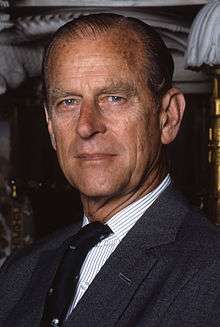 |
The Duke of Edinburgh (b. 1921) |
6 February 1952 – present | Consort | Accession to the throne of Elizabeth II |
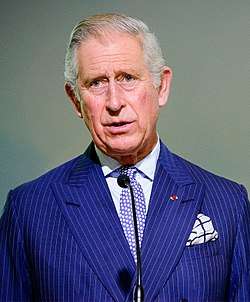 |
The Prince of Wales (b. 1948) |
14 November 1966 – present | Son | Replaced Prince Richard of Gloucester upon reaching the age of majority (18) |
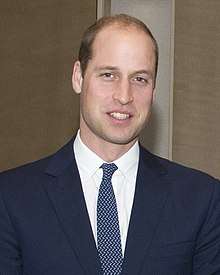 |
The Duke of Cambridge (b. 1982) |
21 June 2003 – present | Grandson | Replaced The Princess Royal upon reaching the age of majority (21) |
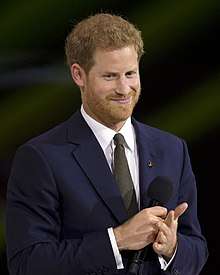 |
The Duke of Sussex (b. 1984) |
15 September 2005 – present | Grandson | Replaced The Earl of Wessex upon reaching the age of majority (21) |
.jpg) |
The Duke of York (b. 1960) |
19 February 1981 – present | Son | Replaced The Duke of Gloucester upon reaching the age of majority (21) |
Past Counsellors of State
The following is a list of all the people eligible to have served as a Counsellor of State, since the passage of the Regency Act 1937, in chronological order. Note that this list contains the dates not of when they served, but when they were eligible to serve.
| Image | Name | Period | Relation | Change |
|---|---|---|---|---|
 |
The Queen (1900–2002) |
1937 – 6 February 1952 | Consort | Passage of the Regency Act 1937 |
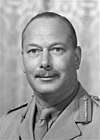 |
The Duke of Gloucester (1900–1974) |
1937 – 6 February 1952 | Brother | |
 |
The Duke of Kent (1902–1942) |
1937 – 25 August 1942 | Brother | |
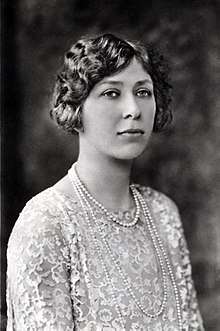 |
The Princess Royal (1897–1965) |
1937 – 6 February 1952 | Sister | |
 |
The Duchess of Fife (1891–1959) |
1937 – 21 April 1944 | Cousin | |
| The Duke of Connaught and Strathearn (1914–1943) Never served |
25 August 1942 – 26 April 1943 | First cousin once removed |
Replaced The Duke of Kent upon his death | |
 |
The Countess of Southesk (1893–1945) |
26 April 1943 – 7 February 1944 | Cousin | Replaced The Duke of Connaught and Strathearn upon his death |
| The Earl of Harewood (1923–2011) |
7 February 1944 – 21 August 1951 | Nephew | Replaced The Countess of Southesk upon reaching the age of majority (21) | |
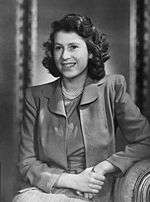 |
The Duchess of Edinburgh (b. 1926) |
21 April 1944 – 6 February 1952 | Daughter | Replaced The Duchess of Fife upon reaching the age of majority (18) |
 |
The Princess Margaret (1930–2002) |
21 August 1951 – 6 February 1952 | Daughter | Replaced The Earl of Harewood upon reaching the age of majority (21) |
| Image | Name | Period | Relation | Change |
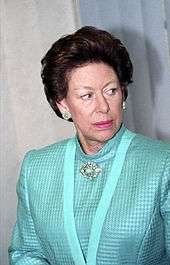 |
The Countess of Snowdon (1930–2002) |
6 February 1952 – 10 March 1985 | Sister | Accession to the throne of Elizabeth II |
 |
The Duke of Gloucester (1900–1974) |
6 February 1952 – 10 June 1974 | Uncle | |
 |
The Princess Royal (1897–1965) |
6 February 1952 – 25 December 1957 | Aunt | |
| The Earl of Harewood (1923–2011) |
6 February 1952 – 9 October 1956 | Cousin | ||
 |
The Queen Mother (1900–2002) |
19 November 1953 – 30 March 2002[1] | Mother | Passage of the Regency Act 1953 |
 |
The Duke of Kent (b. 1935) |
9 October 1956 – 26 August 1965 | Cousin | Replaced The Earl of Harewood upon reaching the age of majority (21) |
 |
Princess Alexandra of Kent (b. 1936) |
25 December 1957 – 18 December 1962 | Cousin | Replaced The Princess Royal upon reaching the age of majority (21) |
_(cropped).jpg) |
Prince William of Gloucester (1941–1972) |
18 December 1962 – 15 August 1971 | Cousin | Replaced Princess Alexandra of Kent upon reaching the age of majority (21) |
| Prince Richard of Gloucester (b. 1944) |
26 August 1965 – 14 November 1966 | Cousin | Replaced The Duke of Kent upon reaching the age of majority (21) | |
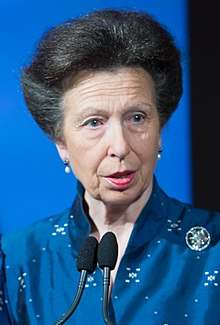 |
The Princess Royal (b. 1950) |
15 August 1971 – 21 June 2003 | Daughter | Replaced Prince William of Gloucester upon reaching the age of majority (21) |
| The Duke of Gloucester (b. 1944) |
10 June 1974 – 19 February 1981 | Cousin | Replaced The Duke of Gloucester upon his death | |
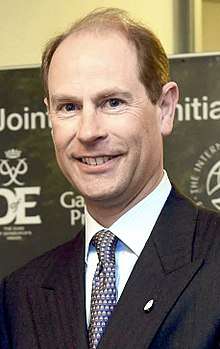 |
The Earl of Wessex (b. 1964) |
10 March 1985 – 15 September 2005 | Son | Replaced The Countess of Snowdon upon reaching the age of majority (21) |
See also
References
- ↑ Queen Elizabeth lost her position as Counsellor of State when she was widowed. However, the Regency Act 1953 made a special exception, including her as a Counsellor of State.
- Velde, François R. (2004). Regency Acts 1937 to 1953. Retrieved 2005.